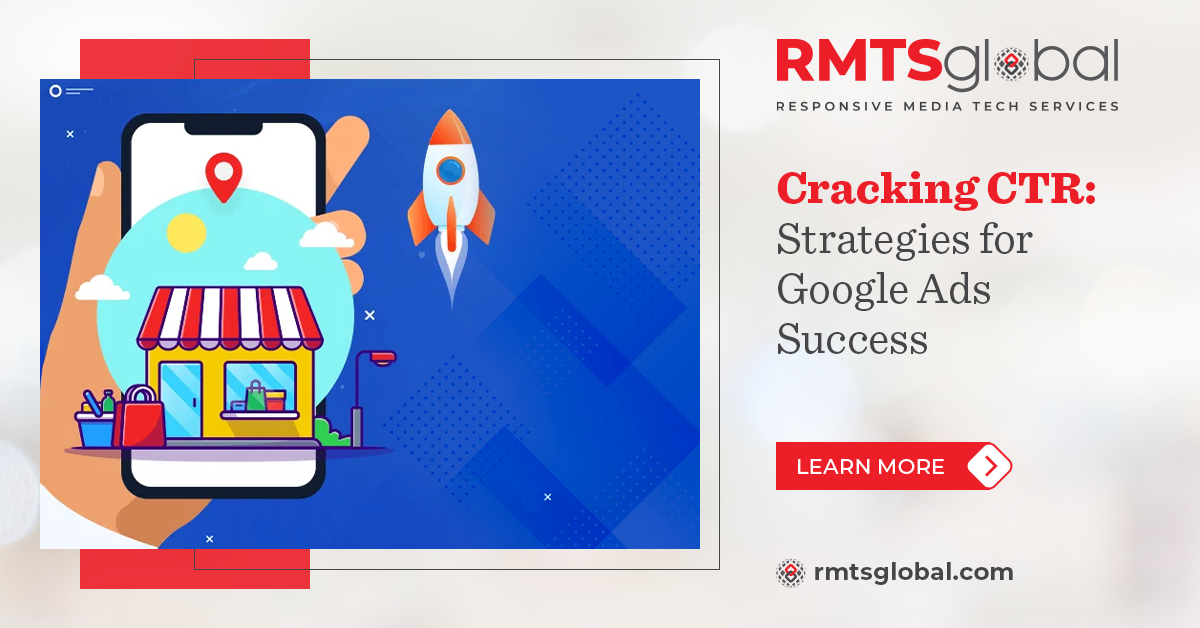Google Ads has become an indispensable tool for businesses striving to connect with their target audience and drive valuable traffic to their websites. As an essential aspect of any successful online marketing strategy, Google Ads offers an array of benefits, including the ability to increase brand visibility, generate leads, and boost sales. However, amidst the vast sea of advertisers vying for user attention, standing out and achieving a high Click-Through Rate (CTR) has become more challenging than ever before.
What is Click-Through Rate?
The Click-Through Rate serves as a crucial performance metric in the world of digital advertising. It measures the percentage of users who click on your ads after viewing them, showcasing the level of engagement and relevance your ads hold for the audience. A higher CTR indicates that your ads are compelling and resonating with users, driving them to take action. On the other hand, a low CTR may signal the need for improvements in ad content, targeting, or overall campaign strategy.
Here are some top strategies to target better Google Ads CTRs:
- Relevant Keywords and Ad Copy: Ensure your Google Ads campaigns are built around highly relevant keywords that align with your target audience’s search intent. Craft compelling ad copy that directly addresses users’ needs and includes relevant keywords to increase the chances of attracting clicks.
- A/B Testing Ad Variations: Implement A/B testing for your ad variations to compare different headlines, descriptions, and calls-to-action. This helps you identify which ad elements resonate best with your audience, leading to higher click-through rates (CTR) and improved performance metrics.
- Optimize Ad Extensions: Take advantage of ad extensions, such as sitelink extensions, call extensions, and structured snippets, to provide additional valuable information to potential customers. Ad extensions can make your ads more prominent, informative, and appealing, ultimately leading to higher CTRs.
- Mobile-Friendly Ads: As mobile device usage continues to rise, it’s crucial to create mobile-friendly ads that are visually appealing and easy to interact with on smaller screens. Optimize your landing pages for mobile devices to ensure a seamless user experience and encourage higher CTRs.
- Negative Keywords and Targeting: Regularly review your ad performance data and identify irrelevant search terms that trigger your ads. Add these as negative keywords to prevent wasted ad spend on irrelevant clicks. Additionally, use audience targeting options to focus your ads on specific demographics or interests, enhancing CTRs by reaching the right audience.
By implementing these tips and consistently monitoring your Google Ads performance metrics, you can steadily improve your click-through rates, enhance campaign effectiveness, and achieve greater success in your online advertising efforts.
There are several alternatives and competitors to Google Ads, each offering unique features and targeting options. Each of these alternatives has its own strengths and audience targeting capabilities, allowing advertisers to diversify their digital advertising strategies and reach different segments of their target market.
Some of the top alternatives and competitors include:
- Microsoft Advertising: (formerly Bing Ads): Microsoft Advertising is the advertising platform for Bing and Yahoo search engines. It allows advertisers to reach a different audience and often has a lower cost per click compared to Google Ads.
- Facebook Ads: Facebook’s advertising platform allows businesses to target specific demographics and interests based on users’ social media behavior. With a vast user base, Facebook Ads offer excellent opportunities for brand awareness and lead generation.
- Amazon Advertising: Amazon’s advertising platform enables sellers to promote their products directly on the e-commerce platform. It’s ideal for businesses focused on e-commerce sales and reaching customers who are ready to make a purchase.
- LinkedIn Ads: LinkedIn’s advertising platform is geared towards B2B marketers and allows targeting based on job titles, industries, and company sizes. It’s a valuable platform for businesses looking to connect with professionals and decision-makers.
- Twitter Ads: Twitter’s advertising platform enables businesses to promote tweets, profiles, and trends to reach their target audience. It’s suitable for businesses aiming to increase brand awareness and engage with users in real-time conversations.
While Google Ads remains a dominant force in the digital advertising landscape, it’s essential for businesses to consider alternative platforms to diversify their marketing efforts and reach different audiences. Each of the mentioned alternatives and competitors brings unique advantages, whether it’s Microsoft Advertising’s reach across Bing and Yahoo, Facebook Ads’ precise demographic targeting, Amazon Advertising’s e-commerce focus, or LinkedIn Ads’ B2B audience engagement. By incorporating these alternatives alongside Google Ads, businesses can create a well-rounded and effective advertising approach that propels their growth and success.
